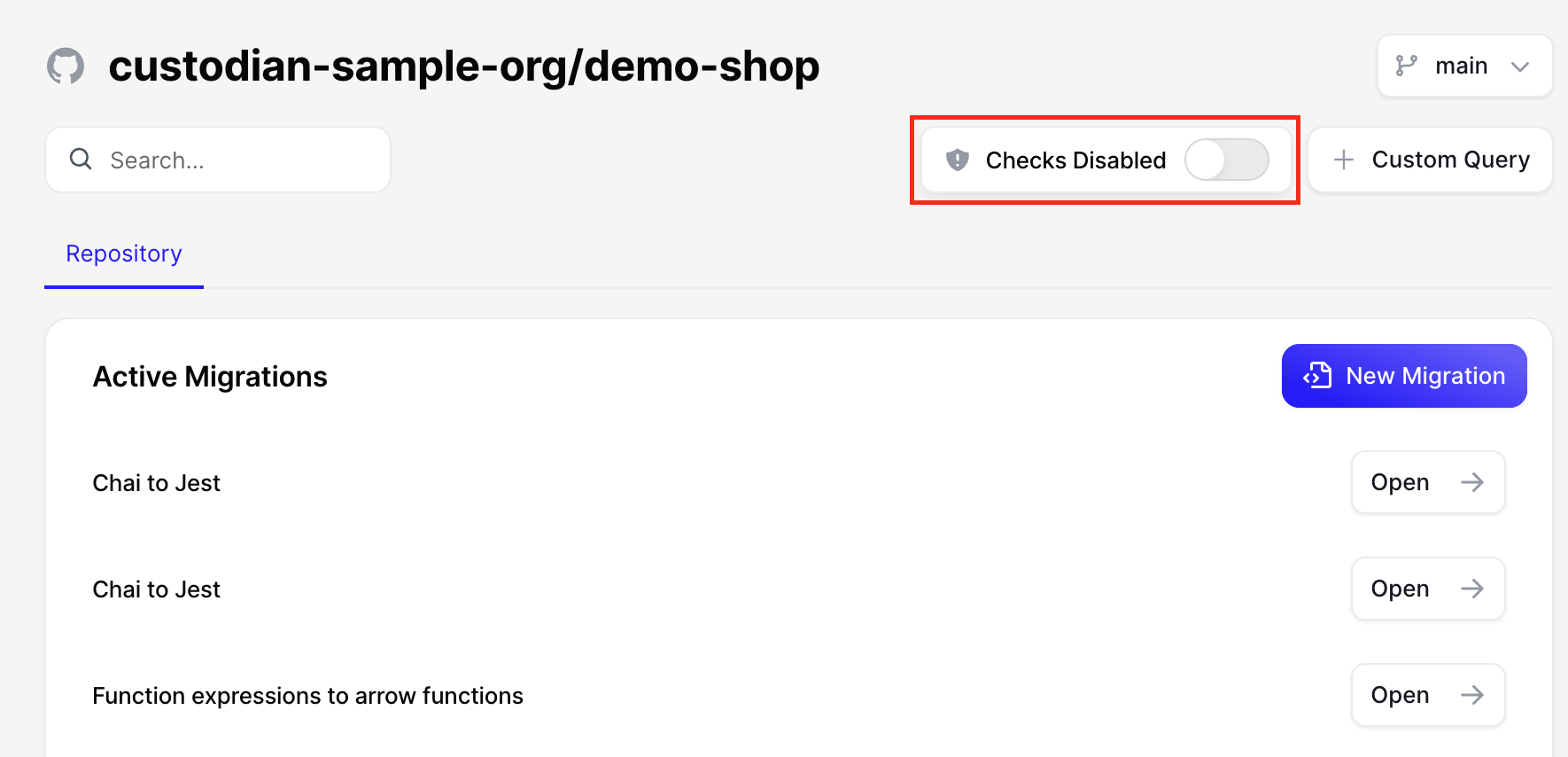Grit patterns can be configured to run as part of your CI pipeline on GitHub.
Setup
To get started, create a configuration file at .grit/grit.yaml. Add patterns that you want checked to your grit.yaml.
Enabling hosted checks
Ensure that you have installed Grit's GitHub App. Once installed, navigate to your project from the web app and enable the Checks toggle.

Bear in mind that patterns must be enforced (i.e. have a level of error or warn) in order to be run as part of CI, as per the details below.
How it works
By default, CI checks run on all files in a commit which are not excluded by .gritignore. Grit then reports on patterns which have a level of warn or higher, and fails the CI check if any files trigger an error level pattern which did not previously trigger that pattern on the last commit to the repo's default branch.
This means that Grit's CI mechanism is sensitive to the trend of the codebase: you can add currently failing patterns to your configuration without breaking the build, and fix them incrementally in the knowledge that Grit will catch regressions.
GitHub Action
As an alternative to the Grit GitHub App, you can use GitHub Actions to run Grit checks. The Grit GitHub Action is available here.
Note: The GitHub action does not include a cache of previous results, so it will annotate all patterns with a level of warn or higher—even if they were previously reported on the main branch.